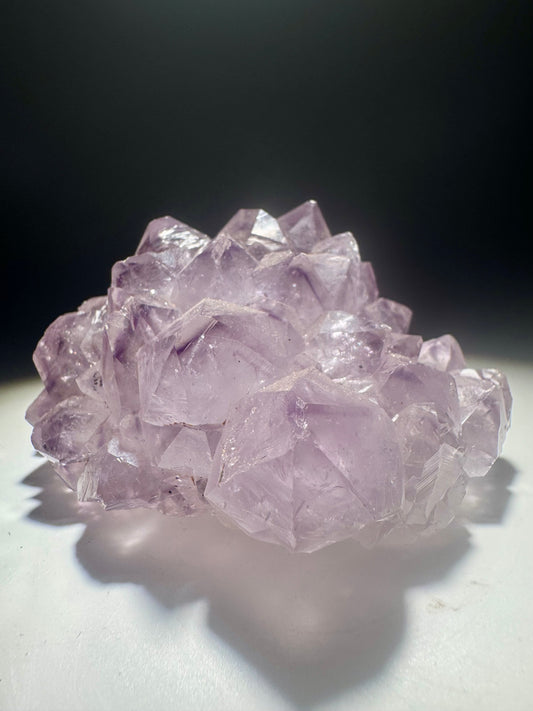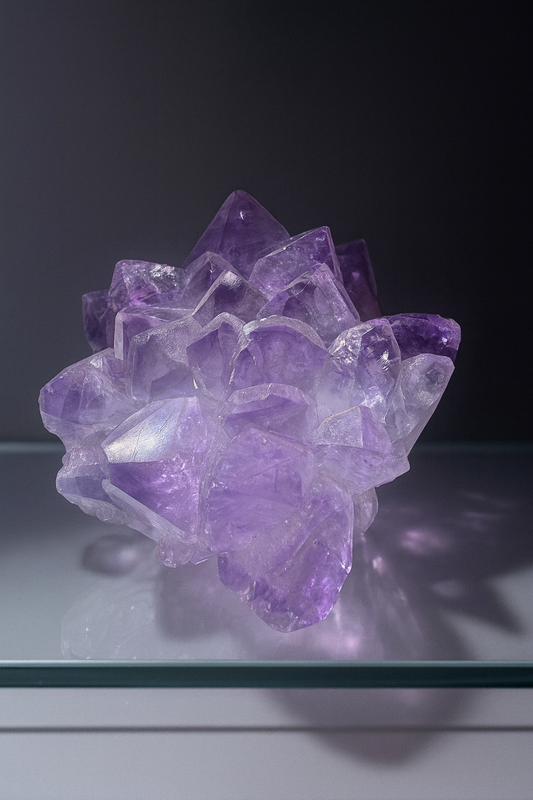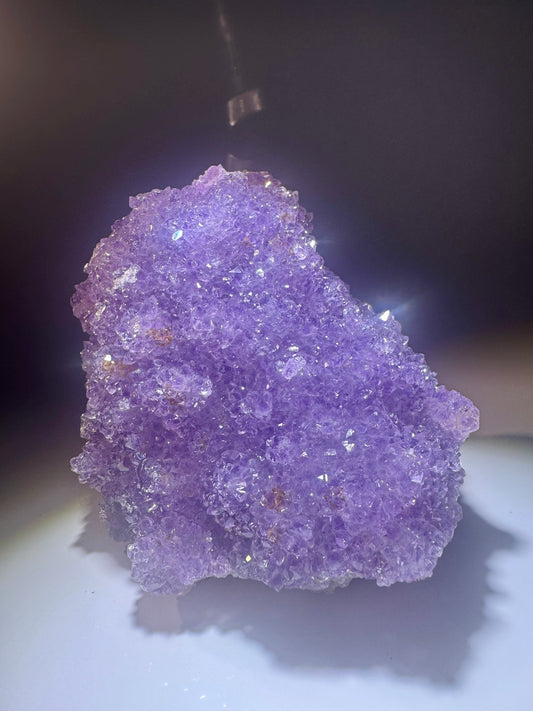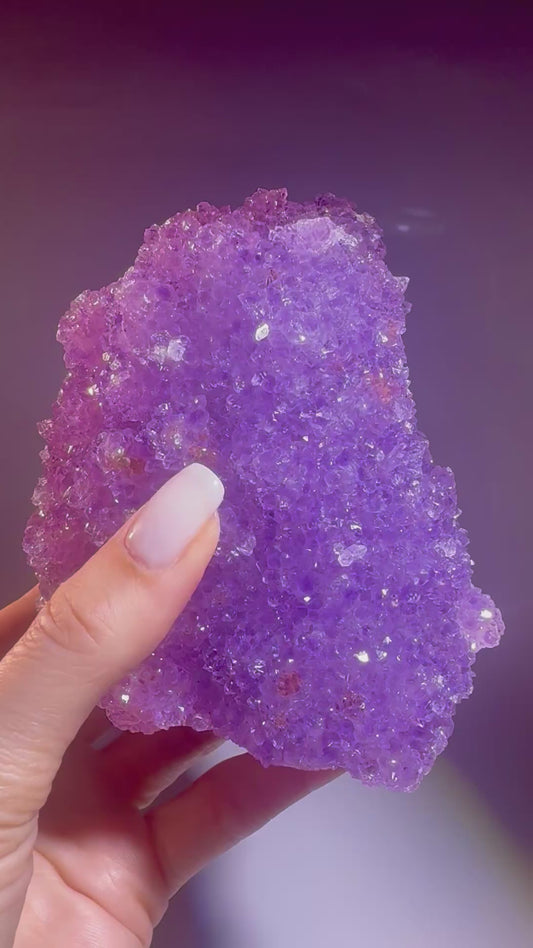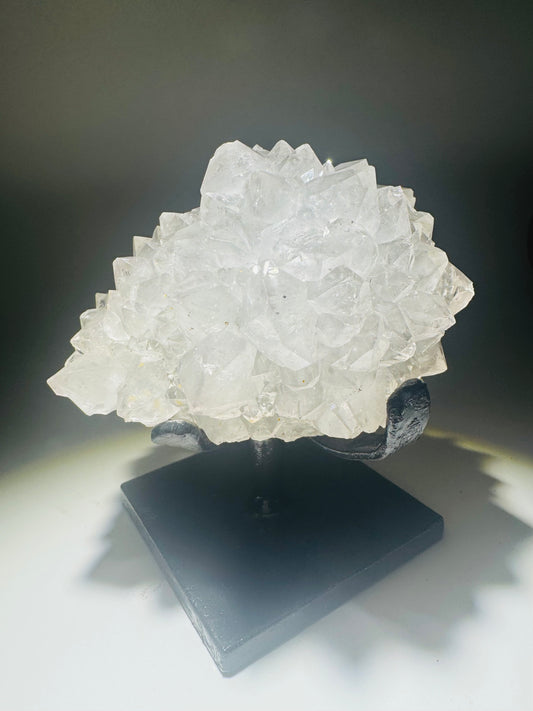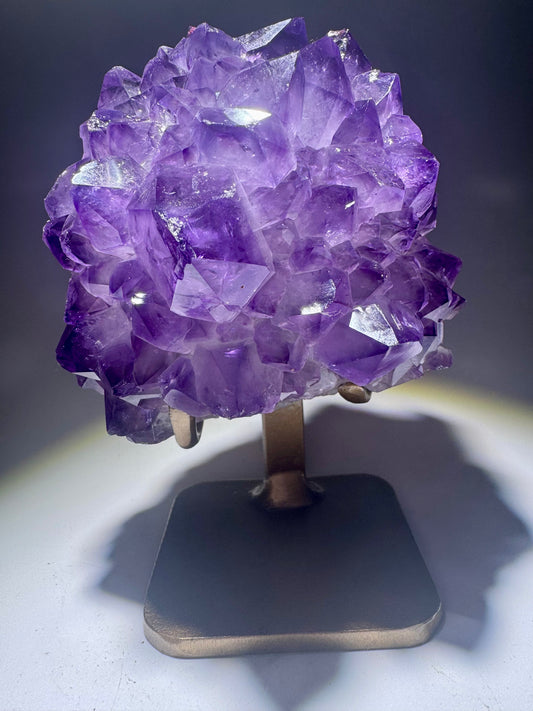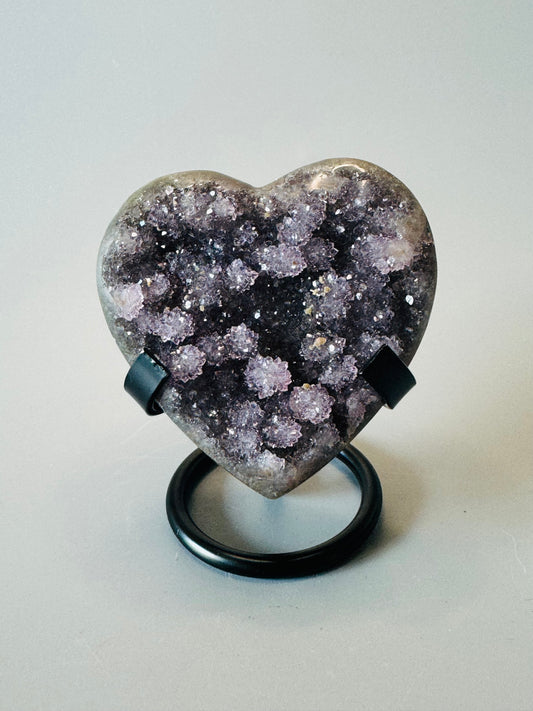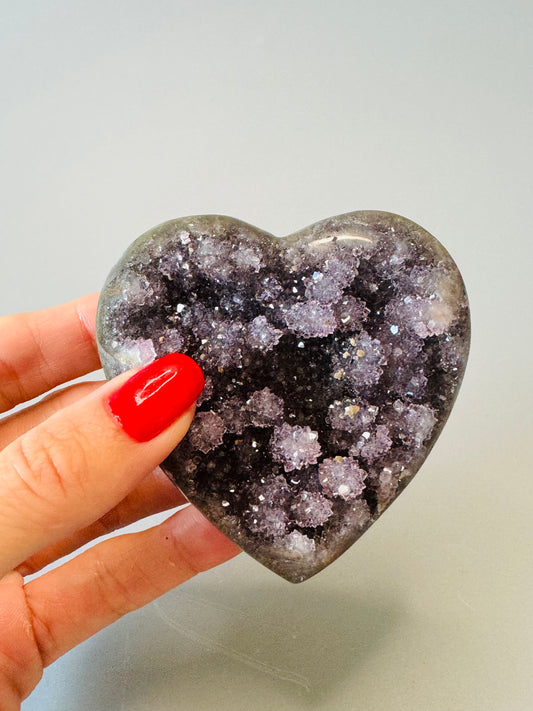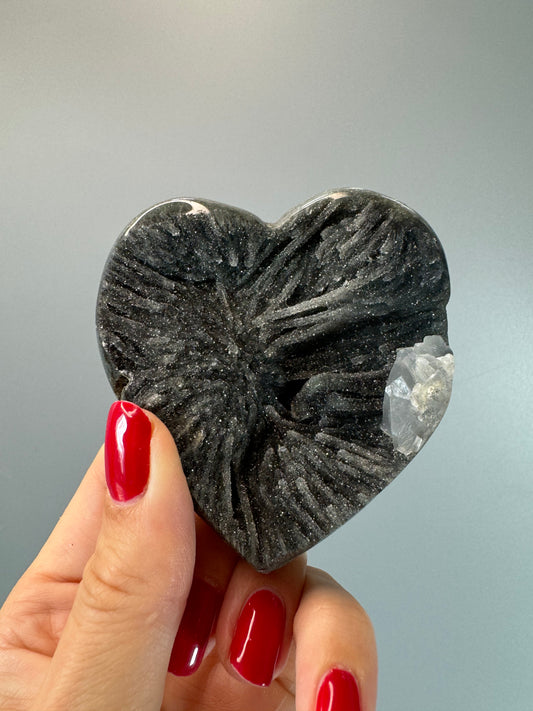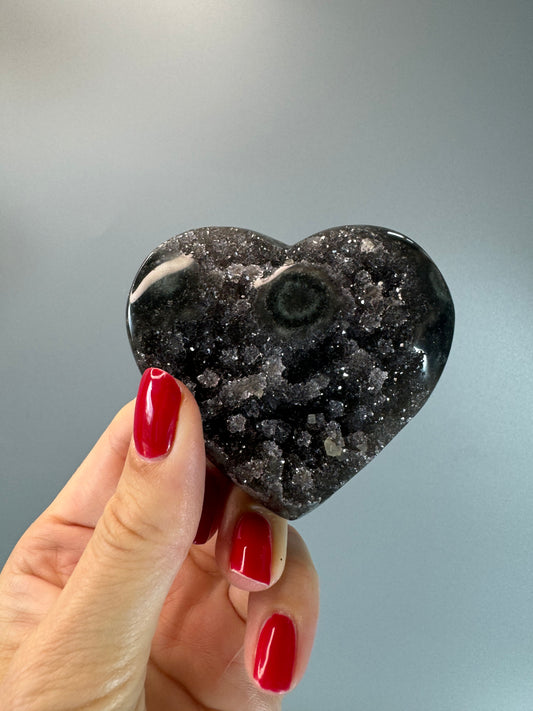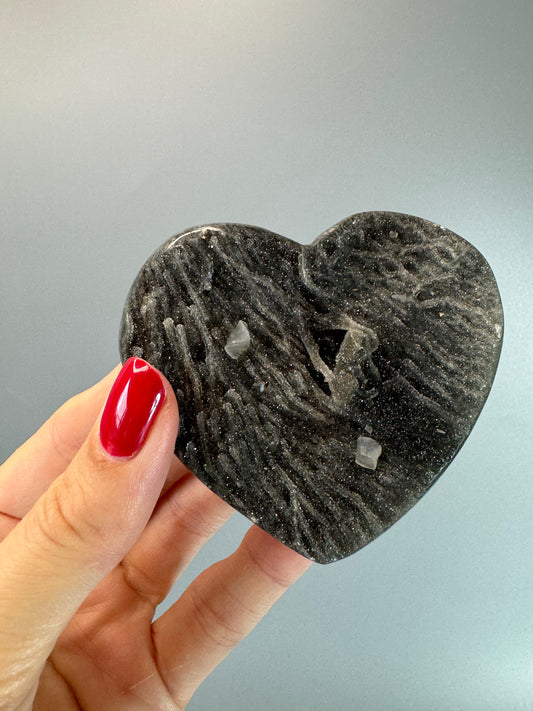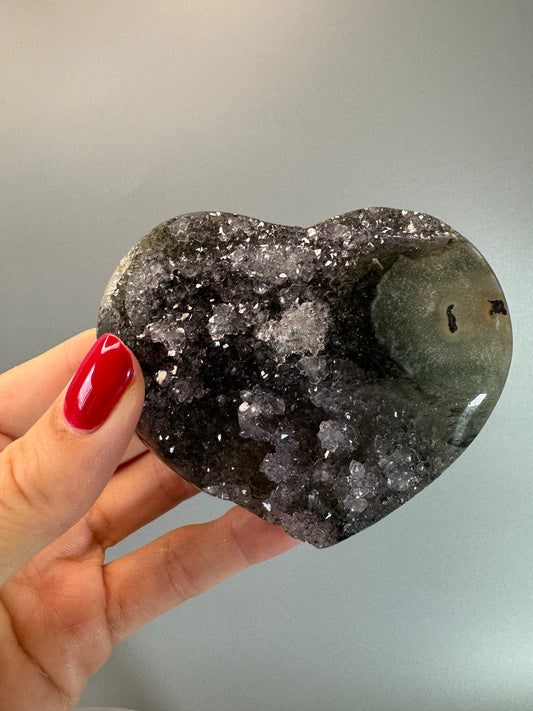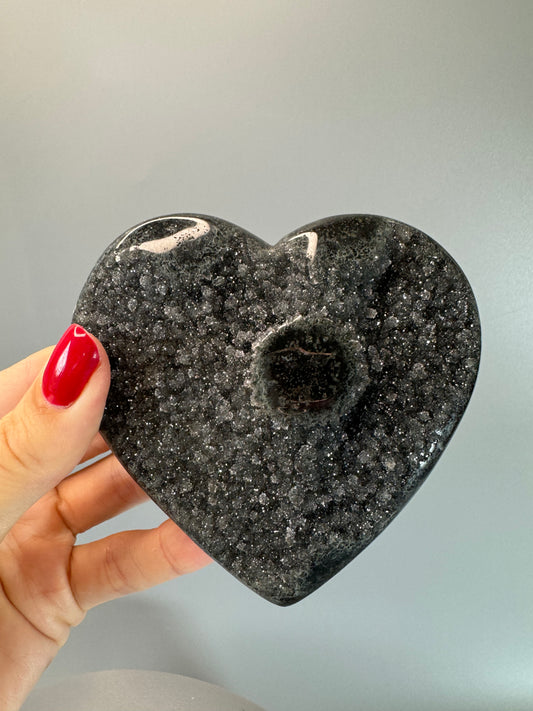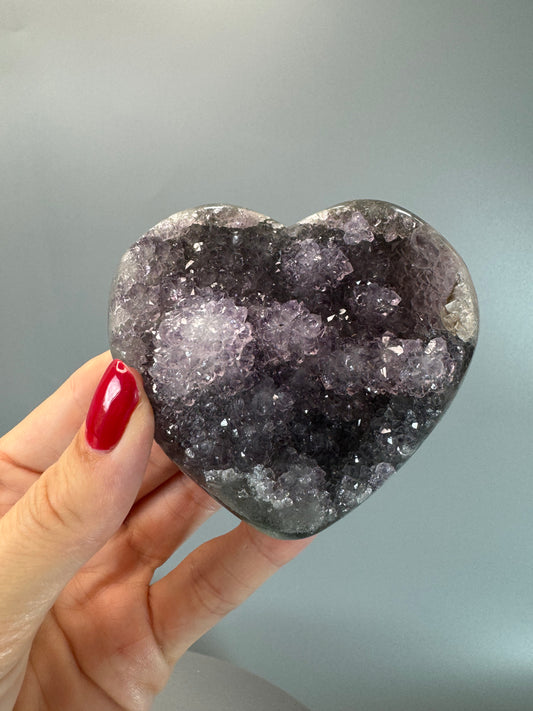Collection: Buy stalactite – natural beauty & energy
Formation of crystal stalactites:
Crystal stalactites are a special type of stalactite formed primarily from mineral crystals such as quartz, calcite, aragonite, or other minerals. Their formation is similar to that of classic stalactites, but they often consist of crystal structures that make their appearance particularly fascinating. Their formation process spans thousands to millions of years and is characterized by the following steps:
1. Mineral-rich water seeps through the rock:
Rainwater percolating through the ground absorbs carbon dioxide (CO₂) and forms weak carbonic acid (H₂CO₃). This acidic solution dissolves minerals such as calcium carbonate (CaCO₃) or silicon dioxide (SiO₂) from the surrounding rock. In volcanic or calcareous environments, the water can also absorb other mineral components.
2. Water drips into a cave or rock cavities:
When mineral-rich water trickles through cracks and fissures into a cave or cavity, carbon dioxide is released. This causes the dissolved minerals to crystallize and settle on the cave ceiling, where the stalactite slowly forms.
3. Crystal growth:
The crystals begin to form, growing layer by layer down the droplet's path. These crystalline stalactites differ from ordinary stalactites in their sparkling, clear crystal formations, which can appear in various patterns. They can be composed of quartz, calcite, aragonite, or other minerals, depending on the minerals present in the solution.
4. Slow growth:
The growth of crystal stalactites is extremely slow. Every time a drop of water falls, a tiny amount of minerals is deposited, which promotes crystal growth.
5. Color variations and transparency:
The color and transparency of crystal stalactites depend on the minerals they contain. Quartz stalactites are often clear or milky white, while calcite or aragonite stalactites can take on a yellowish or reddish hue.
Special features:
• Crystalline structure: In contrast to classic stalactites, which usually consist of uniform layers, crystal stalactites have a sparkling, often transparent structure that reflects light in a unique way.
• Variety of colors: Depending on the minerals and chemical compounds they contain, crystal stalactites can appear in different colors and patterns.
Crystal stalactites are breathtaking natural phenomena, captivating with their sparkling surfaces and complex structures. They form in extremely slow processes that often take millions of years, making them rare and valuable natural wonders.
-
Amethyst stalactite blossom 8.5 cm – lilac tips
Regular price 99.00Regular price 99.00 -
Amethyst stalactite flower 9.5 cm from Uruguay
Regular price 129.00Regular price 129.00 -
Amethyst blossom 10 cm – lilac stalactite
Regular price 290.00Regular price 290.00 -
Deep purple amethyst blossom from Uruguay – stalactite crystal
Regular price 159.00Regular price 159.00 -
Amethyst flower with phantoms – unique stalactite from Uruguay
Regular price 119.00Regular price 119.00 -
Deep purple amethyst blossom from Uruguay – 7.4 cm stalactite crystal
Regular price 179.00Regular price 179.00 -
Large Amethyst Flower 1.08 kg – Extra Quality Uruguay
Regular price 199.00Regular price 199.00 -
Giant Amethyst Flower from Uruguay – Stalactite Crystal 4 kg
Regular price 590.00Regular price 590.00 -
Exclusive Amethyst Blossom/Flower 14.5cm – 1.42kg
Regular price 490.00Regular price 490.00 -
Deep purple amethyst blossom on wooden stand
Regular price 179.00Regular price 179.00 -
Snow-white quartz blossom from Uruguay – stalactite point
Regular price 299.00Regular price 299.00 -
Enchanting amethyst blossom from Uruguay – stalactite gemstone
Regular price 229.00Regular price 229.00 -
Sweet amethyst blossom on gold stand – gemstone stalactite from Uruguay, 7 cm
Regular price 169.00Regular price 169.00 -
Amethyst Blossom / Flower Uruguay 14.5 cm with Gold Stand | Dark Purple Tips | 748 g – UNIQUECRYSTALS
Regular price 249.00Regular price 249.00 -
Rainbow Amethyst Heart - 7cm, 142g
Regular price 89.00Regular price 89.00 -
Amethyst Heart - 8cm, 216g
Regular price 79.00Regular price 79.00 -
Amethyst Heart with Stalactites - 7cm, 160g
Regular price 139.00Regular price 139.00 -
Exceptional Amethyst Heart with Calcite - 9cm, 247g
Regular price 129.00Regular price 129.00 -
Exceptional Amethyst Heart with Stalactites - 7.5cm, 176g
Regular price 119.00Regular price 119.00 -
Amethyst Heart with Stalactites - 6.5cm, 160g
Regular price 69.00Regular price 69.00 -
-
Amethyst Heart with Stalactites - 7.5cm, 134g
Regular price 89.00Regular price 89.00 -
Amethyst Heart - 6.5cm, 137g
Regular price 35.00Regular price 35.00 -
Amethyst Heart - 8cm, 319g
Regular price 99.00Regular price 99.00 -
Amethyst Heart - 6.3cm, 183g
Regular price 89.00Regular price 89.00 -
-
Amethyst Heart - 9cm, 312g
Regular price 119.00Regular price 119.00 -
-
Amethyst Heart with Stalactites - 6.5cm, 124g
Regular price 45.00Regular price 45.00 -
Amethyst Heart - 8cm, 241g
Regular price 89.00Regular price 89.00

